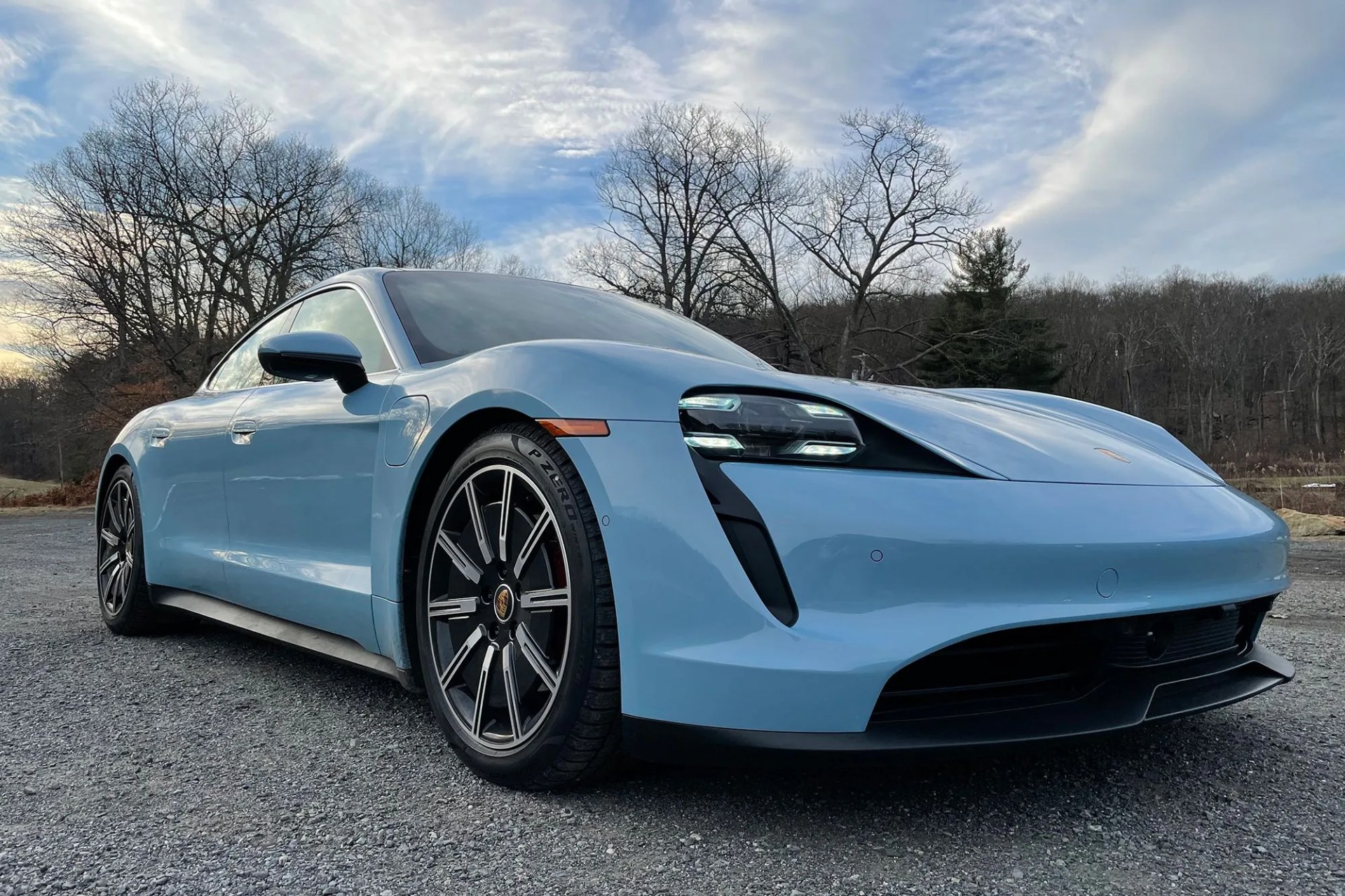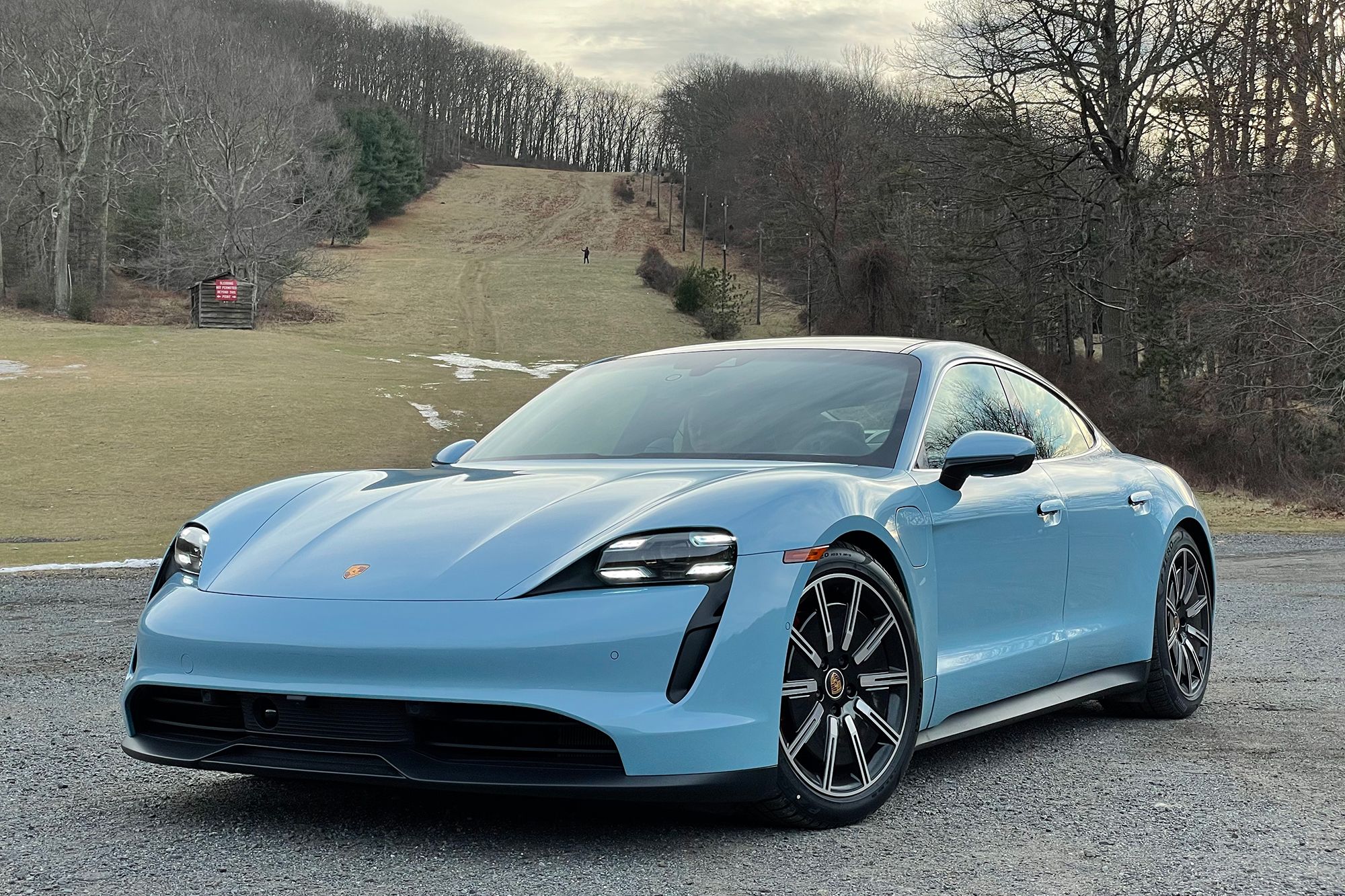To say there were great expectations heaped upon the Porsche Taycan would be putting it mildly. As Porsche’s first electric vehicle, it faced more haters and doubters than any Porker since the Cayenne.
Perhaps that’s why, in contrast with Zuffenhausen’s usual modus operandi of rolling out a new vehicle in base-model form first then working up to the more exciting versions, Porsche launched the Taycan in Turbo and Turbo S forms. Clearly, no one could argue with specs like 750 horsepower, 774 lb-ft or torque and a 0-60-mph time of 2.6 seconds (especially when, in typical Porsche fashion, it proved quicker than its maker claimed).
The flipside of this was that when Porsche then announced the Taycan 4S several months later, it seemed like, well, kind of a letdown. Only 562 horsepower? 0-60 takes 3.8 whole seconds? Yeah, I know: first world problems, as the kids say. A week with the Taycan 4S (clad in its launch shade of Frozen “Let It Go” Blue) was enough to prove just how silly those initial thoughts were.
The Taycan 4S looks just as good as any Taycan
 Will Sabel Courtney
Will Sabel CourtneyUnlike, say, the 911, where spending more bucks on a Turbo or GT3 buys visual differentiation on top of added booyah, every Taycan looks effectively identical. Strip off the badges and spec the same wheels, and an $81,390 base model is effectively identical twins with a loaded $220,000 Turbo S. In other words: nobody needs to know you bought the 4S.
Which is great, because that means every trim of Taycan is an equally damn fine-looking automobile. Porsche did a great job carrying over the concept car looks of the Mission E to the real world; the Taycan looks futuristic without being outlandish or over-the-top, from its gecko-like headlights to its broad, sculpted butt. And thanks to its EV powertrain, neither end needs to be designed around the bulk of an internal combustion engine.







